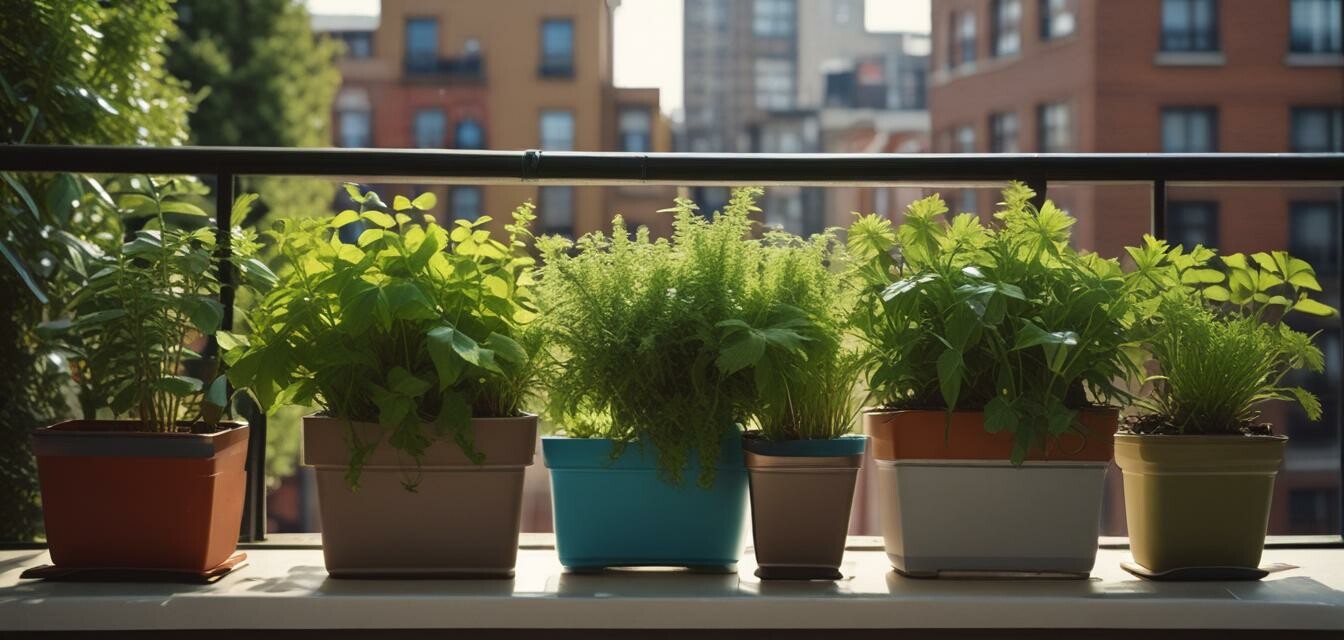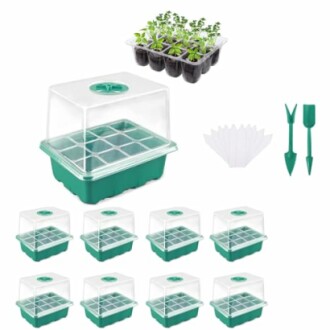
How to use self-watering containers
Key Takeaways
- Self-watering containers provide consistent moisture to plants.
- These containers reduce the frequency of watering needed.
- They help in preventing overwatering and underwatering.
- Ideal for urban gardening and balcony setups.
- Many options available that suit different plant types.
Maintaining plant health in urban environments can be challenging due to limited space and resources. One effective solution is the use of self-watering containers, which simplify the watering process while ensuring that your plants have consistent access to moisture. This article details the benefits and proper usage of self-watering containers for optimal plant hydration.
What are self-watering containers?
Self-watering containers are designed with a built-in water reservoir at the bottom. These containers allow plants to absorb water as needed, resulting in healthier plants and reduced maintenance. They're especially useful for busy individuals or those new to gardening.
Benefits of using self-watering containers
- Consistent moisture: Keeps the soil evenly moist, which is crucial for healthy plant growth.
- Less frequent watering: Ideal for busy lifestyles, as plants get the water they need automatically.
- Prevention of waterlogged soil: Good drainage system helps in preventing overwatering.
- Ideal for small spaces: Makes it easy to maintain a garden on balconies or patios.
- Variety of designs: Available in multiple styles to match your decor and plant needs.
How to use self-watering containers
- Select the right container: Choose a self-watering container that suits the plants you want to grow. Consider size, shape, and material. You can explore our selection of container plants for ideas.
- Prepare your plants: If you are starting from seeds or seedlings, use high-quality potting soil that allows for good drainage and moisture retention.
- Fill the reservoir: Add water to the reservoir according to the manufacturer's instructions. Ensure you are not overfilling.
- Plant care: Monitor water levels and top off the reservoir as needed. Most self-watering containers come with indicators for easier maintenance.
- Watch for growth: As your plants grow, adjust the water levels if necessary, and add fertilizer to provide nutrients.
Commonly used plants in self-watering containers
| Plant Type | Best For |
|---|---|
| Herbs | Basil, Mint, Parsley |
| Vegetables | Tomatoes, Peppers, Lettuce |
| Flowers | Petunias, Marigolds, Geraniums |
Choosing the right self-watering container
When selecting containers, pay attention to their features:
- Look for high-quality materials that can withstand outdoor conditions.
- Choose containers with adjustable water levels to cater to various plant types.
- Consider container volume to ensure it suits your plants' growth needs.
Top self-watering containers to consider
Aliangting 8 Pack Seed Trays
This propagator seed tray kit includes humidity domes, allowing excellent growth conditions for your plants, making it perfect for balcony gardening.
Learn MoreMaintaining your self-watering container
Regular maintenance ensures the longevity and effectiveness of your self-watering container. Here are a few tips:
Maintenance Tips
- Check the water level regularly; top up when it gets low.
- Ensure the drainage holes are not clogged.
- Clean the container periodically to prevent algae buildup.
- Rotate your plants to ensure they grow evenly and actually thrive.
Understanding when to water
Even though self-watering containers are designed to reduce hands-on watering, you must still check the moisture levels in the soil regularly. If the top layer of the soil feels dry, it’s an indicator that your plants might need additional watering.
Conclusion
Self-watering containers are a game changer for urban gardening, especially for those with limited time and space. By ensuring consistent moisture for your plants, they help reduce maintenance while promoting healthier growth. Explore different self-watering options available and start enjoying the benefits today!
Pros
- Convenient and efficient watering system.
- Encourages healthy plant growth.
- Perfect for small spaces such as balconies.
- Reduces frequency of watering chores.
Cons
- Initial cost may be higher compared to regular containers.
- Requires some monitoring to prevent overwatering.
Further Reading
For more information on container gardening, check out our resources:
- DIY Balcony Garden Projects
- Container Gardening Tips
- Herb Gardens
- Plant Selection for Balconies
- Seasonal Balcony Gardening
Fun fact
Did you know that self-watering containers have been used for centuries? The concept dates back to ancient civilizations that utilized similar methods for irrigation, showcasing the effectiveness of this gardening technique in promoting plant growth!
